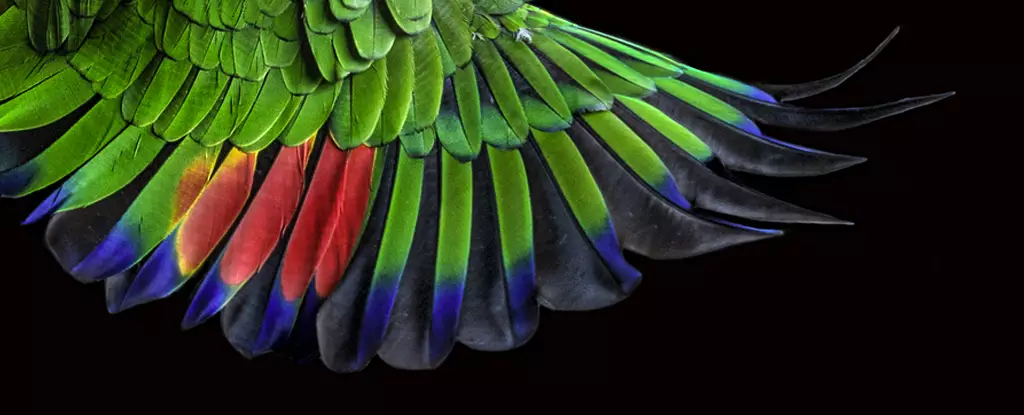Through an analysis of hundreds of preserved bird specimens from museum collections worldwide, scientists have uncovered a specific set of feather rules that play a crucial role in the power of flight. This newfound understanding allows researchers to more accurately predict which dinosaurs had the ability to fly. Field Museum of Natural History paleontologist Jingmai O’Connor emphasizes the significance of flight in theropod dinosaurs, including birds, as a key factor in their evolutionary success. The versatile structures of feathers likely contributed to their ability to thrive on Earth.
The Trend in Wing Feathers
Examining wing feathers from 346 different species of birds revealed an intriguing trend – all flying birds possess 9 to 11 asymmetrical flight feathers known as primaries. This common trait is shared among birds of all sizes, from tiny hummingbirds to mighty eagles. In contrast, flightless birds exhibit a wide range of primary feather counts, with emus lacking them entirely and penguins displaying as many as 40. This discovery sheds light on the evolutionary patterns related to flight capabilities in birds.
By studying fossils dating back up to 160 million years, researchers were able to identify which bird ancestors possessed the necessary feather characteristics for flight. Among the 35 different species of extinct birds analyzed, some showed evidence of being able to fly based on their feather symmetry, wing proportions, and number of primaries. Notably, Archaeopteryx and Microraptors were identified as likely flyers, highlighting the diversity of flying dinosaurs beyond modern birds. Conversely, Caudipteryx, despite having the correct number of primary feathers, exhibited almost symmetrical feathers, suggesting a loss of flight capability over time.
The researchers’ analysis points to flight evolving only once in dinosaurs, with the required anatomy originating in a common ancestor of all pennaraptoran groups. While some species like Caudipteryx became flightless early in their evolution, others like Microraptors retained their flight abilities but ultimately reached an evolutionary dead end. Modern birds represent the descendants of those dinosaurs that successfully adapted their wings for flight. This finding challenges previous claims that flight evolved multiple times in dinosaurs based solely on skeletal data, underscoring the importance of studying feather structures in understanding flight evolution.
Despite these significant discoveries, researchers acknowledge that our fossil records still lack the earliest stages of wing evolution. This limitation suggests that there is more to uncover about the evolution of flight in dinosaurs. While the current analysis provides valuable insights into the feather rules behind flight evolution, it is not the final word in the ongoing debate. Continued research and exploration are essential to further unravel the mysteries of how dinosaurs took to the skies.


Leave a Reply